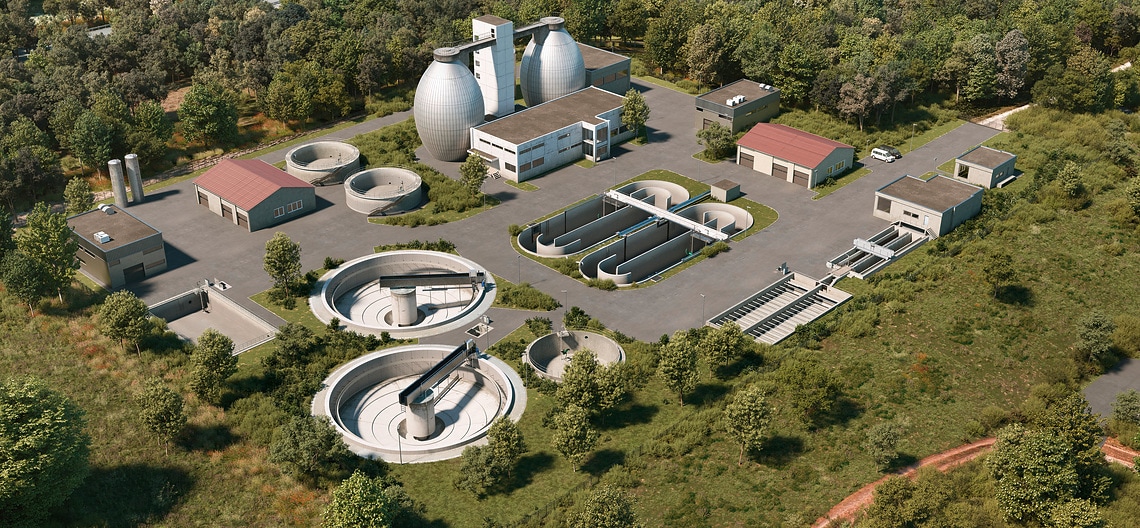Types of sewage: The right pump for every application
The nature of sewage varies depending on the type of sewage. Sewage can contain a variety of contaminants, including organic and inorganic substances, chemicals and other substances originating from households, commercial businesses and industrial plants. Depending on what is in the sewage, it will affect the materials, mechanics and motor of a sewage pump, wastewater pump or faecal pump.

Why the type of sewage is important when choosing a sewage pump
Some types of sewage can, for example, corrode and wear out materials or otherwise damage the pumps. This makes the selection of components and materials for a sewage pump extremely important to ensure that it can withstand the specific requirements of the sewage. Depending on the impurities in the sewage, a pump must have specific characteristics.
The right sewage pump for the specific type of sewage
Choosing the right sewage pump, faecal pump or wastewater pump will ensure long-term function and durability by minimising potential corrosion, wear and damage from the sewage.
Discover Wilo’s sewage pumps here:
For single family housesFor commercial buildings or apartment buildingsFor municipal drainageFAQ – Frequently asked questions
What types of sewage are there?
The European standard DIN EN-1 12056-1 regulates the types of sewage: Sewage is understood to be any type of contaminated wastewater that is generated in the domestic and commercial sector and is altered by use. This includes rainwater, water contaminated by use and commercially used water. Sewage also includes any water that is piped to the municipal collector sewer.
Domestic sewage
Domestic sewage is a mixture of drinking water with substances in solid and dissolved form that end up in the sewage. Domestic sewage is produced in kitchens, laundry rooms, bathrooms and toilets. Experience shows that the substances occurring in sewage from households are mainly human faeces, hair, food waste, cleaning agents and detergents, as well as various chemicals, papers, rags, but also sand (for example in mixed systems due to rainwater leaching). Numerous fibrous components such as nonwoven fabrics or wet wipes, which do not decompose and cannot be pumped through the wastewater facilities, pose a problem for the disposal of domestic sewage.
Greywater
Greywater is slightly contaminated sewage that is free of faeces and urine. In residential households, it is produced, for example, by washing hands, showering, bathing and washing machine operation. Rainwater hitting balconies and roofs also counts as greywater. However, kitchen wastewater, even that from the dishwasher, no longer falls under this category because of its heavy contamination with food residues, fats and oils (see black water). Grey water is the "cleanest" sewage. This makes it technically the easiest to treat and reuse. It is mechanically and biologically treated on site, often combined with heat recovery, to produce clear water. This is then used as process water for house cleaning, garden irrigation and toilet flushing. If grey water is treated to bathing water quality, it is also available for washing clothes.
Black water
For housing purposes, black water is sewage without grey water from toilets, consisting of faecal solids, urine, toilet paper and flushing water. Kitchen wastewater is also counted as black water if it is disposed of via the sink without a coarse filter and grease separator. Black water can in turn be divided into brown and yellow water.
Brown water
Brown water is a component of black water and contains only faeces, toilet paper and flushing water. Toilets separate it from black water. Since brown water is heavily contaminated with parasites and bacteria, it is not suitable for reprocessing. At best, it is used dehydrated as fertiliser.
Yellow water
Yellow water consists of urine and flushing water. It is separated from black water by toilets and urinals. Urine contains a lot of valuable minerals, especially phosphates. This is why yellow water can play a role as agricultural fertiliser in the future. For example, about two kilogrammes of phosphorus fertiliser can be obtained from 1,000 litres of urine.
Untreated sewage
Raw sewage is the untreated and not pre-filtered sewage that comes directly from the municipal collection sewer, which is part of a combined system. This means that the sewage is combined from different sources such as households, commercial and industrial facilities and rainwater. Untreated sewage contains a variety of contaminants such as organic and inorganic substances that can be harmful to the environment and people's health. This is why untreated sewage must be treated in a wastewater treatment plant before it can be discharged into rivers or lakes.
Rainwater
Rainwater refers to the natural precipitation collected from building roofs, roads, soils and other surfaces. It is generally clean and not contaminated by human use. Rainwater can be collected, stored and used for various purposes such as garden irrigation, flushing toilets or even for drinking water after it has been appropriately treated.
Industrial sewage
Industrial sewage, also called process water or process sewage, is generated in the industrial or commercial sector. Depending on the type of industrial process, this sewage can contain various pollutants such as heavy metals, oils and greases, acids, alkalis and other chemical substances. Industrial sewage can also contain cooling water from industrial processes. Industrial sewage can have a significant impact on the environment if it is discharged untreated into bodies of water or the sewer system. For this reason, industrial companies are obliged to clean the sewage in order to rid it of harmful substances.